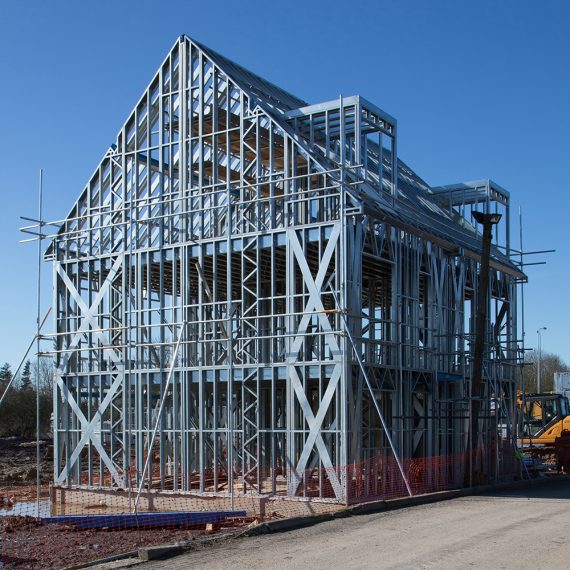Quality Performance
High levels of accuracy, with no shrinking/creeping
Non-Combustible
The benefits of light steel construction in relation to fire safety are:
- Steel is non-combustible; it does not add to the fire load of the building.
- Fire protection for light steel framing is typically provided by the boards used for internal lining, e.g. gypsum-based boards.
- Fire resistance periods of up to 120 minutes are readily achievable.
- The amount of combustible material in a light steel framed building is much lower than in some other forms of construction.
- Modules and pre-boarded light steel panels are fire protected before delivery to site.
- Light steel floors, walls and modules are easily repairable after small fires.
- The fire risk during construction is much lower for light steel framing than for some forms of construction
Durable
The benefits of light steel construction in relation to durability are:
- Maintenance-free, dimensionally stable
- Design life predictions for light steel framing in a ‘warm frame’ environment are in excess of 250 years.
- The NHBC and other housing warrantee providers, require a design life in excess of 60 years, and accept the use of light steel construction.
- Light steel sections are protected from corrosion by continuous hot-dip zinc coating.
- Steel does not shrink, warp or change its shape.
- Light steel construction can be used for walls, floors, roofs and suspended ground floors.
- Steel does not creep under load.
- Galvanised steel does not suffer from fungal or biological deterioration and is not susceptible to insect infestation.
- Even in uninsulated roof constructions light steel sections provide a design life in excess of 100 years.
Acoustic Performance
The benefits of light steel construction in relation to acoustic performance are:
- High levels of acoustic performance can be achieved.
- Light steel construction utilises multiple layers of construction, which are ideal for providing high levels of acoustic insulation.
- Light steel products such as ‘acoustic’ studs and resilient bars are specifically designed to reduce sound transmission.
- Junctions can easily be detailed to minimise flanking sound.
- The high quality assurance ensures repeatable acoustic performance.
- There is a wide variety of proven light steel wall and floor construction systems.



